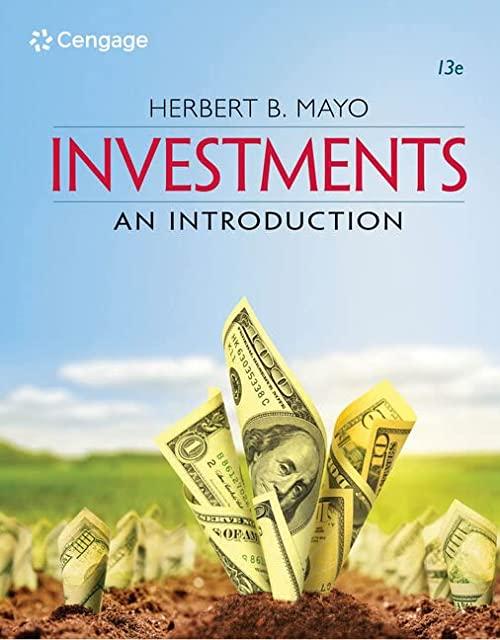Problem P8-8 Finance



7. Use your calculator to determine (1) the current mortgage payment (2) the total interest paid, (3) the payment after the first adjustment and (4) the maximum payment for each of the following $122,500, 30-year mortgages. Assume that the initial interest rate is 4.70 percent. a. Annually adjustable, 1 percent per year, 5 percent lifetime cap. Assume also that rates increase at least 1 percent per year until they reach the lifetime cap and rates never again drop below the lifetime cap for the term of the mortgage. b. Fixed for 3 years and then annually adjustable, 2 percent per year, 5 percent lifetime cap. Assume also that rates increase at least 2 percent per year until they reach the lifetime cap and rates never again drop below the lifetime cap for the term of the mortgage. c. Fixed for 5 years then annually adjustable, 2 percent per year, 6 percent lifetime cap. Assume also that rates increase at least 2 percent per year until they reach the lifetime cap and rates never again drop below the lifetime cap for the term of the mortgage. d. Fixed for 5 years and then adjustable every 5 years, 3 percent per period, 6 percent lifetime cap. Assume also that rates increase at least 3 percent per year until they reach the lifetime cap and rates never again drop below the lifetime cap for the term of the mortgage. a. The current mortgage payment is $ (Round to the nearest cent.) The payment after the first adjustment is $ (Round to the nearest cent.) The maximum payment is $ (Round to the nearest cent.) The total interest paid for a $122,500, 30-year mortgage is $ (Round to the nearest cent.) b. The current mortgage payment is s (Round to the nearest cent.) The payment after the first adjustment is $ (Round to the nearest cent.) The maximum payment is s (Round to the nearest cent.) The total interest paid for a $122,500, 30-year mortgage is $ (Round to the nearest cent.) c. The current mortgage payment is $ (Round to the nearest cent.) The payment after the first adjustment is 5 (Round to the nearest cent.) The maximum payment is $ (Round to the nearest cent.) The total interest paid for a $122,500, 30-year mortgage is $ (Round to the nearest cent.) d. The current mortgage payment is $ (Round to the nearest cent.) The payment after the first adjustment is $ (Round to the nearest cent.) The maximum payment is s (Round to the nearest cent.) The total interest paid for a $122,500, 30-year mortgage is $ (Round to the nearest cent.) 7. Use your calculator to determine (1) the current mortgage payment (2) the total interest paid, (3) the payment after the first adjustment and (4) the maximum payment for each of the following $122,500, 30-year mortgages. Assume that the initial interest rate is 4.70 percent. a. Annually adjustable, 1 percent per year, 5 percent lifetime cap. Assume also that rates increase at least 1 percent per year until they reach the lifetime cap and rates never again drop below the lifetime cap for the term of the mortgage. b. Fixed for 3 years and then annually adjustable, 2 percent per year, 5 percent lifetime cap. Assume also that rates increase at least 2 percent per year until they reach the lifetime cap and rates never again drop below the lifetime cap for the term of the mortgage. c. Fixed for 5 years then annually adjustable, 2 percent per year, 6 percent lifetime cap. Assume also that rates increase at least 2 percent per year until they reach the lifetime cap and rates never again drop below the lifetime cap for the term of the mortgage. d. Fixed for 5 years and then adjustable every 5 years, 3 percent per period, 6 percent lifetime cap. Assume also that rates increase at least 3 percent per year until they reach the lifetime cap and rates never again drop below the lifetime cap for the term of the mortgage. a. The current mortgage payment is $ (Round to the nearest cent.) The payment after the first adjustment is $ (Round to the nearest cent.) The maximum payment is $ (Round to the nearest cent.) The total interest paid for a $122,500, 30-year mortgage is $ (Round to the nearest cent.) b. The current mortgage payment is s (Round to the nearest cent.) The payment after the first adjustment is $ (Round to the nearest cent.) The maximum payment is s (Round to the nearest cent.) The total interest paid for a $122,500, 30-year mortgage is $ (Round to the nearest cent.) c. The current mortgage payment is $ (Round to the nearest cent.) The payment after the first adjustment is 5 (Round to the nearest cent.) The maximum payment is $ (Round to the nearest cent.) The total interest paid for a $122,500, 30-year mortgage is $ (Round to the nearest cent.) d. The current mortgage payment is $ (Round to the nearest cent.) The payment after the first adjustment is $ (Round to the nearest cent.) The maximum payment is s (Round to the nearest cent.) The total interest paid for a $122,500, 30-year mortgage is $ (Round to the nearest cent.)









